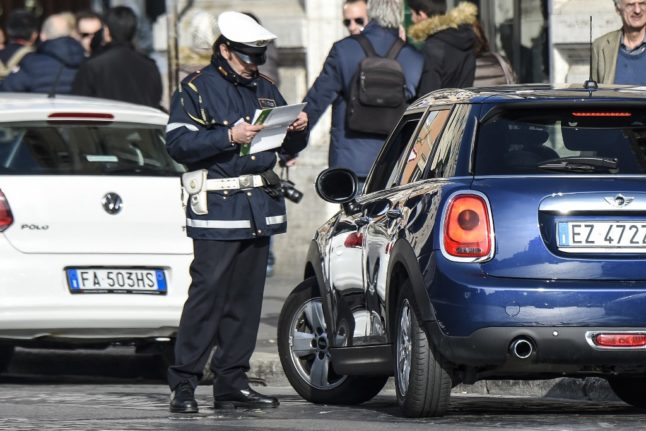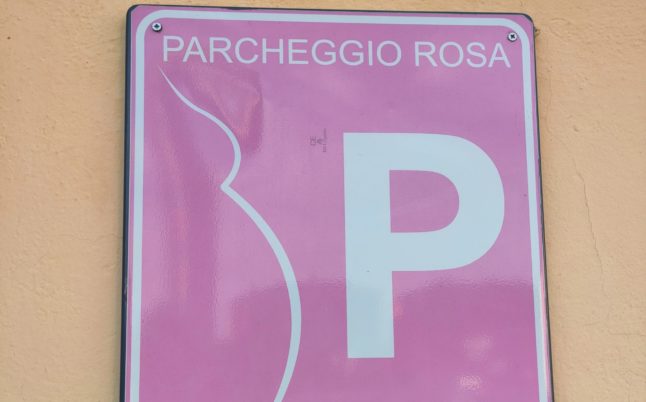Finding a car parking space can be a headache in Italy, especially in busy town centres at peak times.
To ease the burden on drivers with precious cargo, Italy recently formalised its rules on so-called ‘pink parking’ (parcheggio rosa) for pregnant women or parents with children under two years old.
READ ALSO: How visitors to Italy can avoid driving penalties
Pink lines on the road reserved for this group is nothing new, as it existed in some form before, but the latest Highway Code reform introduced new measures and formalised what was previously a gesture.
Here’s what the parking privilege entitles you to now and how to prove you’re eligible to use it.
How pink parking spaces have changed
Before the Italian authorities updated the Highway Code in November, individual towns could reserve some parking spaces, but only for certain categories of people, such as those with limited mobility.
These categories could include pregnant women, but this was not explicitly stated.
As it wasn’t a national measure, town halls created their own pink parking spaces near essential public services like hospitals, schools, parks, banks and post offices. Supermarkets have also historically created pink parking spaces for clients, as a gesture of courtesy.

Under the reform, however, the Highway Code provided for pink parking spaces formally, nationwide.
Italy’s road rules contained a reference to parking spots for pregnant women and parents with children up to the age of two. In order to use these parking spaces, you need a ‘pink permit’ (permesso rosa).
Article 158 of the Highway Code prohibits parking within pink lines if you don’t fall into this category.
Anyone caught using a pink parking space who is not eligible could be fined from anywhere between €80 to €328 for mopeds and from €165 to €660 for other vehicles.
READ ALSO: EXPLAINED: How do you dispute a parking ticket in Italy?
How do you get a pink permit?
To apply for a pink permit, you need to apply to your town hall as the permit must be issued by the municipality of residence (comune di residenza).
Each local authority should have a form for you to fill out, which will then be reviewed by the police.
Depending on where you live, however, it’s worth noting that not all town halls have caught up with the new regulations and may not yet be in a position to give you a pink permit.
The Local contacted one municipality in the province of Bologna to apply, to which they replied, “The municipality is still in the process of identifying any areas to be dedicated to ‘pink’ parking.
“We very much doubt that this will happen before the end of summer 2022.”
To find out if your town hall has begun issuing permits, you can usually email or go online with Spid authentication, if available.
In order to obtain the pink permit you will normally need to show:
- A copy of the certificate of the baby’s due date of birth or the birth certificate;
- A copy of your driving licence;
- A copy of your car registration document.
See full details of Italy’s Highway Code here and visit our travel section for the latest updates.



 Please whitelist us to continue reading.
Please whitelist us to continue reading.
Member comments